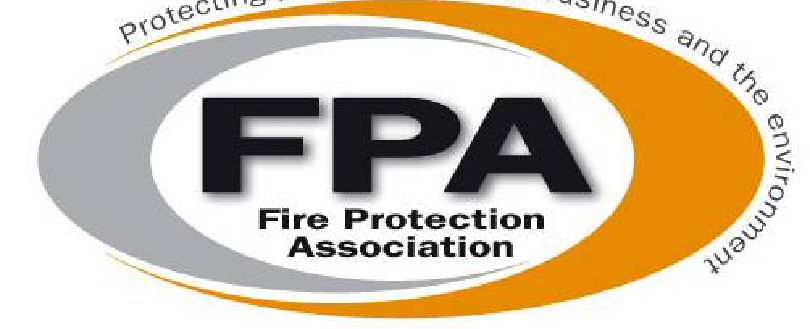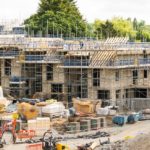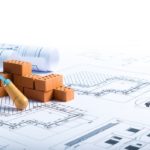Sector - Health & Safety
Has Competency Become more Defined Since Grenfell?

Since the tragic events of the Grenfell Tower fire, the question of competency has rightly been brought to the fore, exposing gaps in skills and knowledge among those responsible for the construction, maintenance, and day to day operation of a building.
In this article, Jonathan O’Neill OBE, Managing Director at the Fire Protection Association (FPA), explores whether anything has really changed since that day in 2017. What hopes are there for a more robust regulatory framework to ensure that the competency – of those responsible for fire safety in a building and those contracted to perform services that can affect the inherent fire safety of a building – is where it should be: at the highest possible level?
Moving competency forward post Grenfell
The Hackitt review was a significant piece of work and, following Grenfell, recommended a more robust approach to managing higher risk residential buildings (HRRBs). The review has put greater pressure on the construction industry and pushed for individuals to increase their understanding of fire risks, as well as the importance of using the appropriate materials and systems to maximise safety. The important point here is around accountability – an area that we must see legislation address properly and fully if we are to increase the safety of our buildings. Accountability cannot simply be passed down the supply chain as we’ve seen happen historically – and the Hackitt Review’s identification of the need for “duty holders” was a welcome first step in clearly identifying roles and responsibilities.
Following this, the Competence Steering Group (CSG) – a cross industry body backed by the government, Industry Safety Steering Group (ISSG), Dame Judith Hackitt and representing over 150 organisations – also released its report, ‘Setting the Bar: a new competence regime for building a safer future’, in October. This provided a blueprint for improving competency and outlines requirements of the Building Safety Manager role, which is set to be brough into legislation through the Building Safety Bill.
The CSG’s report is welcomed, however the size of the task at hand is significant. An ISSG report from 2020 identified a “lack of widespread, proactive” leadership on building safety. The FPA’s own research found that over a fifth of those responsible for fire safety in a building don’t check the competency of contractors to do a job – although we believe the problem is actually far worse than the data suggests.
Defining competency
There still isn’t a clear and concise definition of competency making it even more of a challenge to hold any single person(s) accountable.
Both Dame Judith Hackitt and the subsequent Setting the Bar report have suggested that the idea of competency must be relevant to the individual workplace and situation, however this does not take away from the fact that individuals must have the sufficient training and experience or knowledge that allow them to act within best practice, should a fire occur.
At the FPA we believe that to be truly competent, an individual or product must be assessed by an accredited third party.
The FPA competency pillars
The actions of virtually everyone involved in the construction sector can impact on the vulnerability of a building to fire and that is why we believe it is vital that the entire sector ensures they are taking the appropriate action to minimise the risk of fire in the building. Below we outline the FPA’s six key competency pillars:
1.Specialist work being third party approved – this means being on a register which is independently verified via a UKAS accredited scheme.
- Trustworthy – the responsibility of anyone involved in the fire safety of a building is high. They must be trusted to do the right thing by the organisation or building, the people within it and the law.
- Self-aware – knowing the limits of an organisation or an individual’s own competency means knowing when to turn a job down because they don’t yet have the relevant experience or skillset.
- Good knowledge and application – it’s very important that you ensure your knowledge has come from reputable sources, whether this is from training, online research or other competent persons in the trade. Always ensure your knowledge is from a valid source – you must then be able to apply this knowledge appropriately to the situation and the building.
- Demonstrable experience – when undertaking work in high-risk environments such hospitals or other care settings, it is important that all involved can demonstrate experience in such areas.
- Committed to, and actively engaged in, continued professional development (CPD) – the road to competency is a long one. Legislation, buildings, businesses and their use are changing constantly. Sourcing ways to stay up to date on current issues, trends and legal requirements is an essential part of competency.
Those working in the construction field must remember that everything they do plays a big role in the safety of a building in the future. Construction teams must ensure they are consistently following the correct guidelines and taking appropriate action to minimise the risk of building fires.
For more information on third party accreditation and the resources available to those working within the construction industry please visit www.thefpa.co.uk/know-your-building
If you would like to read more stories like this, then please click here
Related Articles
More Health & Safety Features
- Construction workers face the highest risk of fatality
13 Aug 25
Construction workers face the highest risk of fatality, with one in two Brits saying HSE training is skipped due to time pressure.
- A new chapter for the Building Safety Regulator
12 Aug 25
A package of potentially significant reforms to the makeup of the Building Safety Regulator have been announced.
- Radical action to speed up removal of unsafe cladding
18 Dec 24
The government has set out tough new targets to fix unsafe buildings in England.






